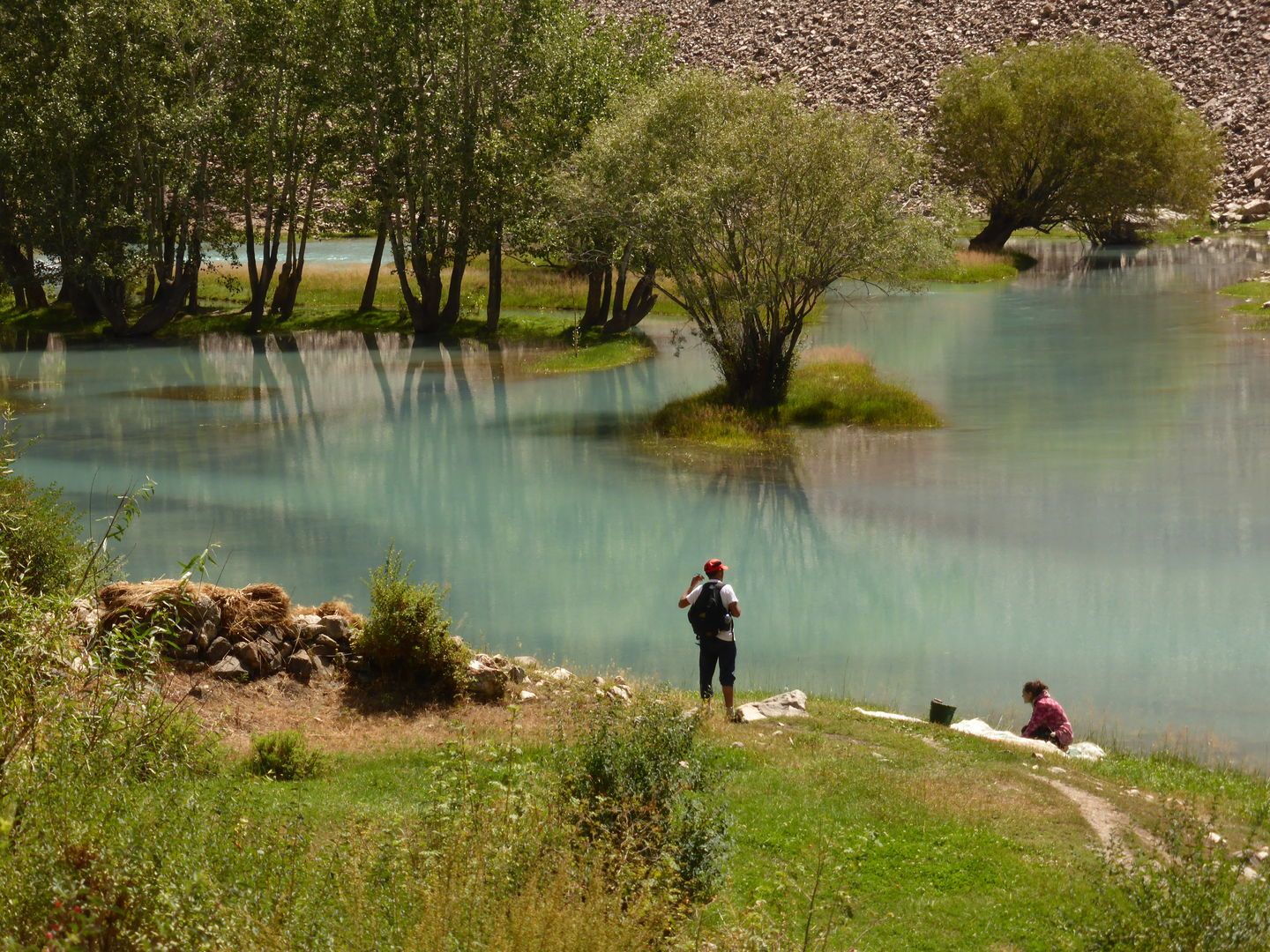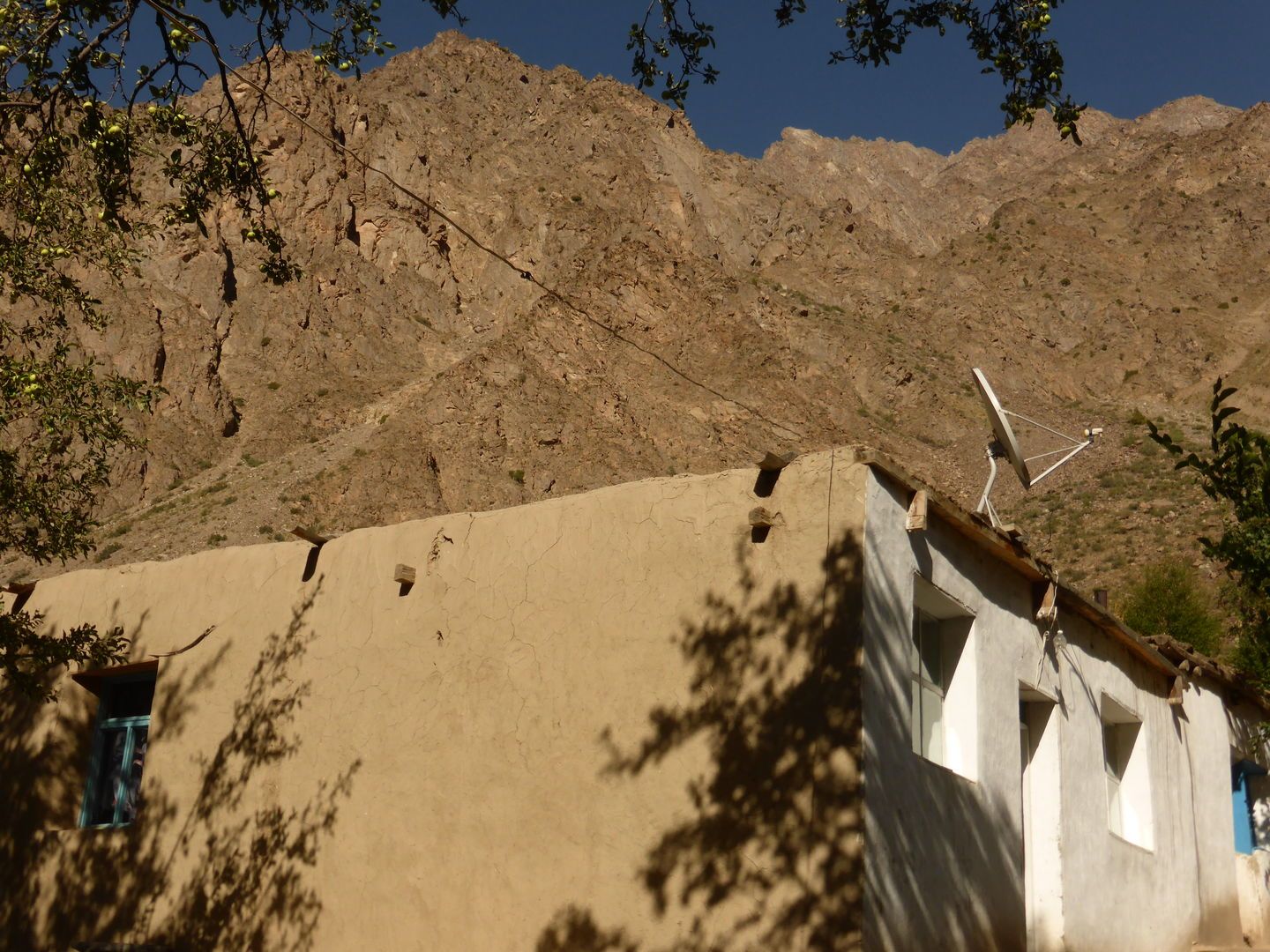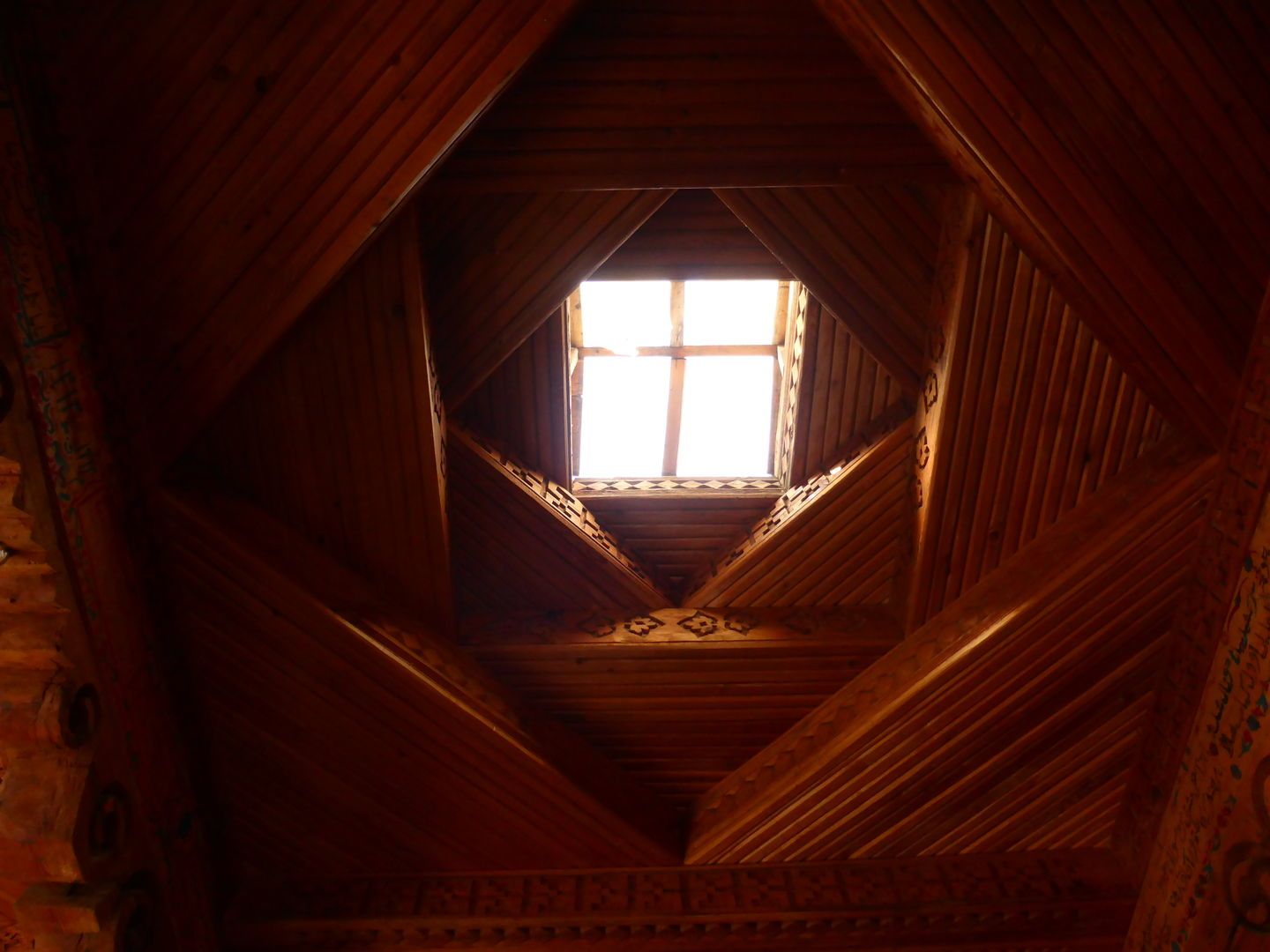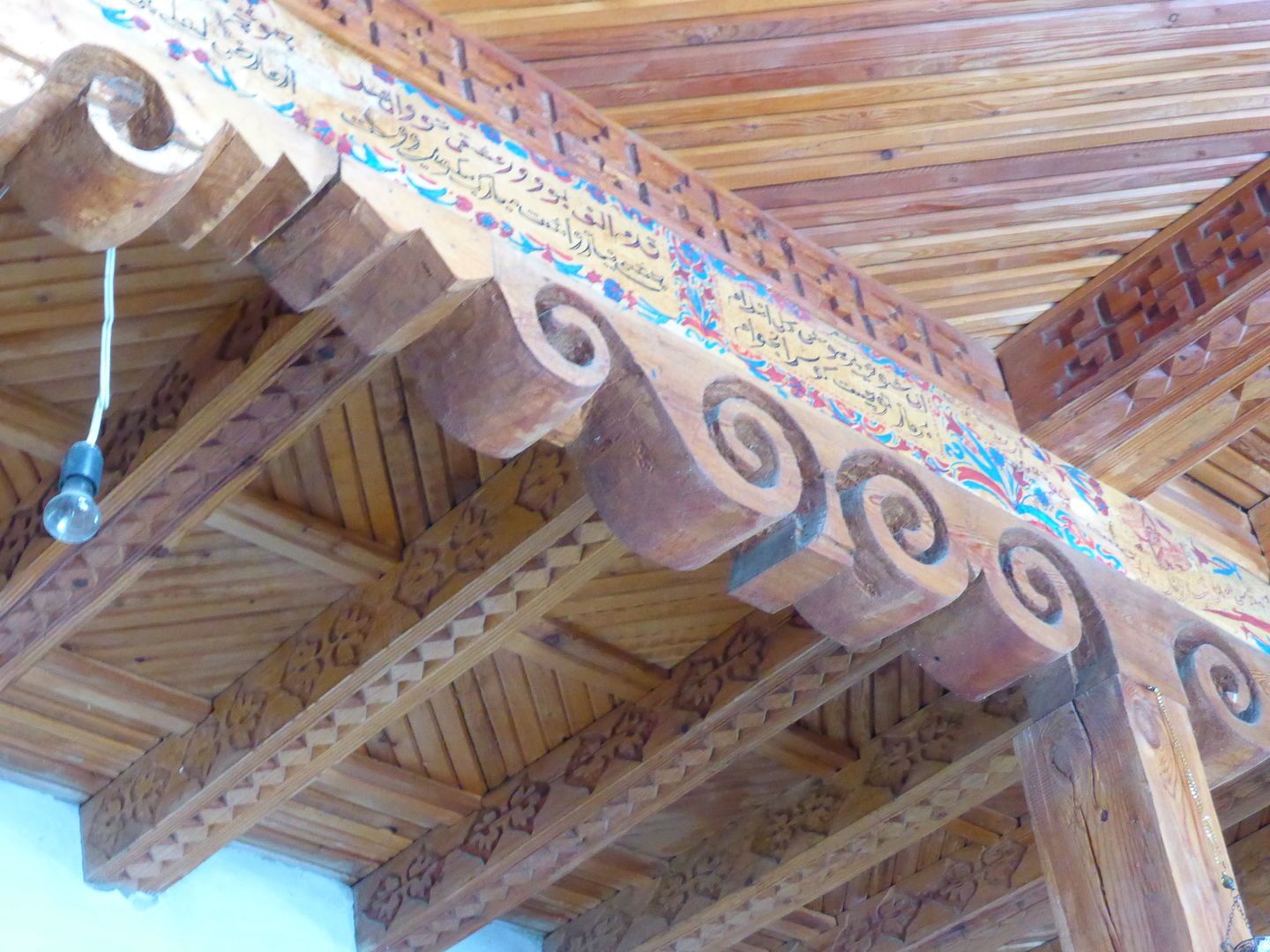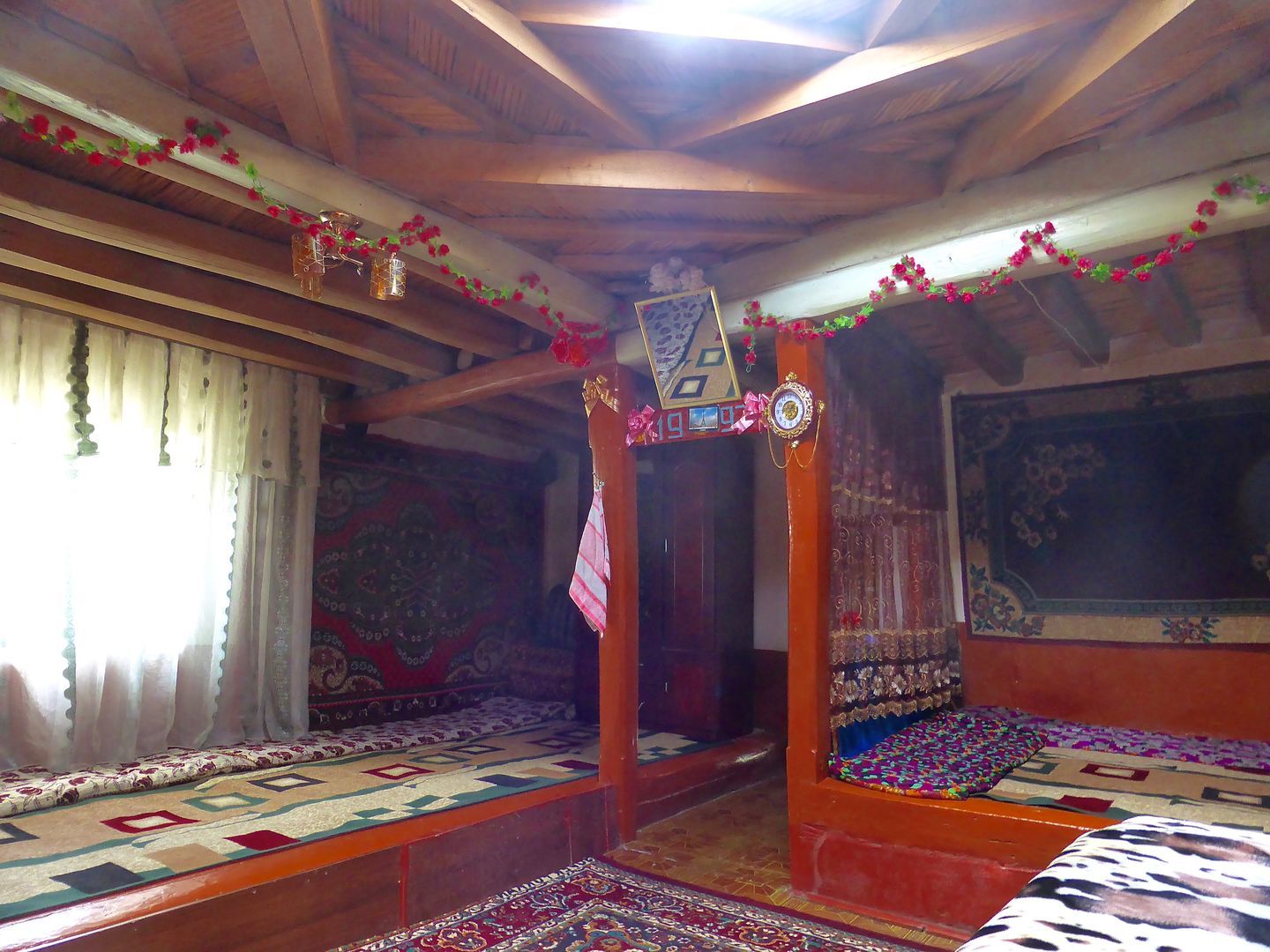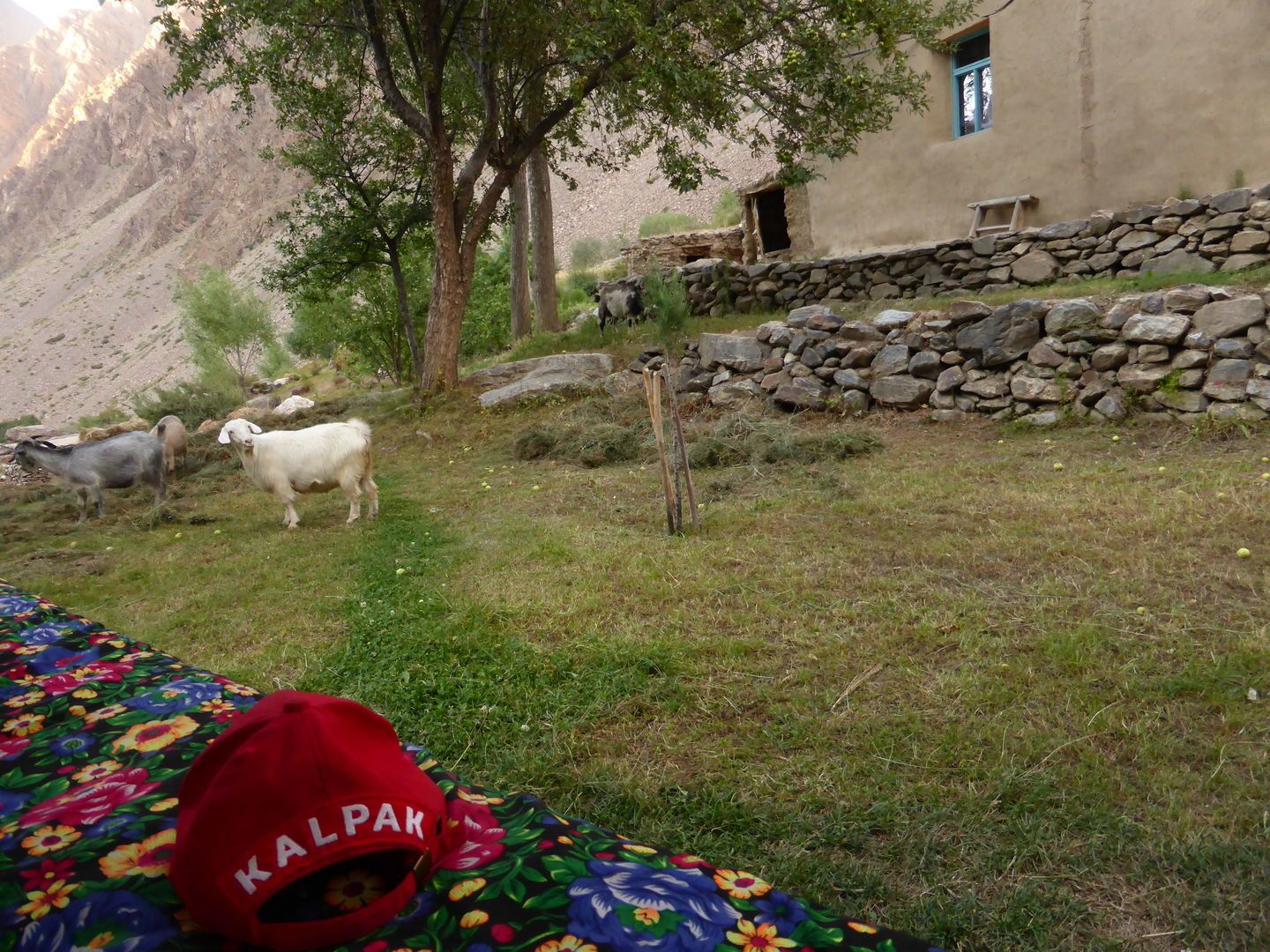Pamiri Houses
People in Pamir have a different language, culture, and religion to the Tajiks. Even their houses stand out with their beauty and symbolism. It is a tradition to build a house as a family, instead of buying one. In a family, the youngest son stays with his parents after marriage to take care of them when they get old. The other brothers move out and build their own Pamiri house. It takes about a year to collect all the materials required and to build the house. Since wood is rare in Pamir and the centerpiece of the house consists of wooden pillars, many plant trees in the garden for the future house of any sons. They protect it with warm wool or materials.
So what does a Pamiri house look like?
If you’re traveling through Pamir, sometimes you’ll barely notice the flat, one-storeyed houses built right up against a cliff or mountains. Such a house has the same color clay as the surrounding hills and has only a clay roof over the construction to protect it from the elements. Fortunately, in Pamir, there is not much rain and in winter the snow is regularly shoveled from the roof. In summer, the roof is used for drying hay or fruit.
It can seem pretty small from the outside; however, it is deceptively spacious inside. The main room is huge and has five pillars spaced out around the room. Along these pillars there are platforms. In the middle of the room, a square empty space is left. The platforms are used as beds, meaning you sleep low to the floor. It’s customary to sleep with your feet facing outwards and not pointing towards the center of the house.
In the center of the ceiling, you’ll find a window. Once, this would have been the only window, but nowadays there is usually another small window on the right side of the entrance. The reason to have fewer windows can be explained by practical reasons. The house would have been easier to keep warm. However, the practice originates from Zoroastrian traditions of pre-historic times.
For Zoroastrians, the four elements of nature, namely air, water, fire, and earth, were holy. These elements were represented within the four leveled-rectangle frame of the central window. The closest element to the window is fire as it comes closest to the sun. Next is air, and then comes water and finally earth. Through these elements, the light coming into the house and air or thoughts getting out of the house should have been purified. Each frame is richly decorated with symbols and sometimes with Marco Polo horn wood carvings and verses from Quran.
The five pillars
The five pillars were initially dedicated to five guardians of the Zoroastrian religion. The first pillar is dedicated to Suroush, the guardian of conscience and wisdom. The pillar was usually made from the wood of the juniper tree, which is believed to have healing or disinfecting properties. Thus near the first pillar is a place for babies. The second is dedicated to Mithra, the guardian of truth, oath, and commitment. Near this pillar, newly married couples take their place in the hope of a partnership based on trust and the fulfillment of promises made on their wedding day. The third pillar is dedicated to Anahita, the guardian of fire and water. In the house, the kitchen and fire are located near this pillar. The fourth and fifth pillars are connected to each other with a cross beam. These are dedicated to the guardian of earth, Zamyod, and Azar, the guardian of eternal fire.
Nowadays when you ask the family about the meaning of these pillars, they will name Prophet Mohammad, his sister Fotima, her husband Ali and their sons Hassan and Hussein, or refer to the five pillars of Islam. This is explained by the fact that the Pamiri are Shia Muslims, who believe that after Mohammad, Ali was his successor. When Islam came to Central Asia in the 6th century, it forbade Zoroastrian practices. Pillar and house construction methods that go back millennia have been adjusted for modern needs and are still surprisingly popular in the Pamirs.
You can also sleep in one of such Pamiri homestays, during our Pamir Highway Tour. In Jisev Valley, such houses reward you after the hike and offer to experience the authentic Pamiri culture.



